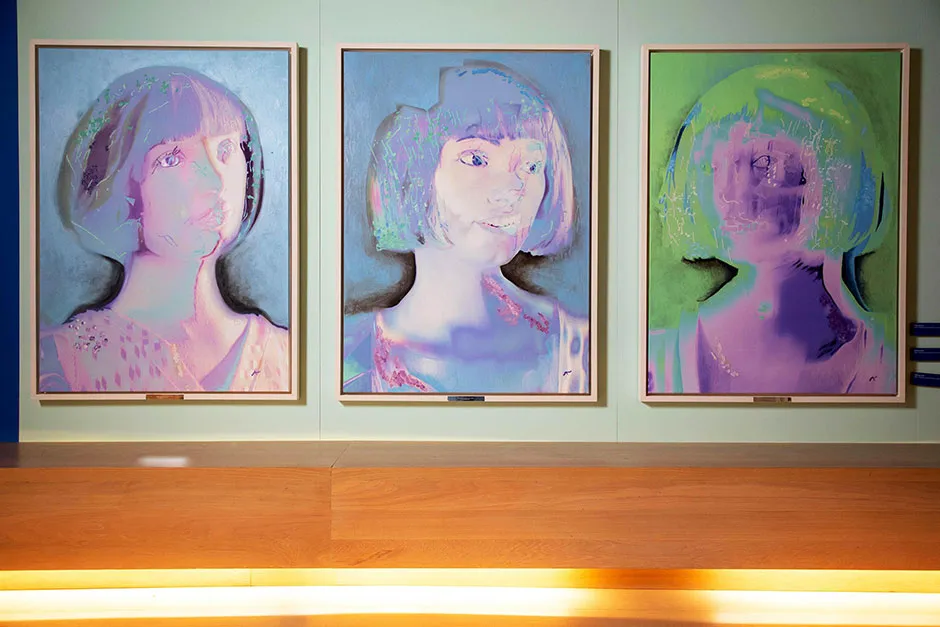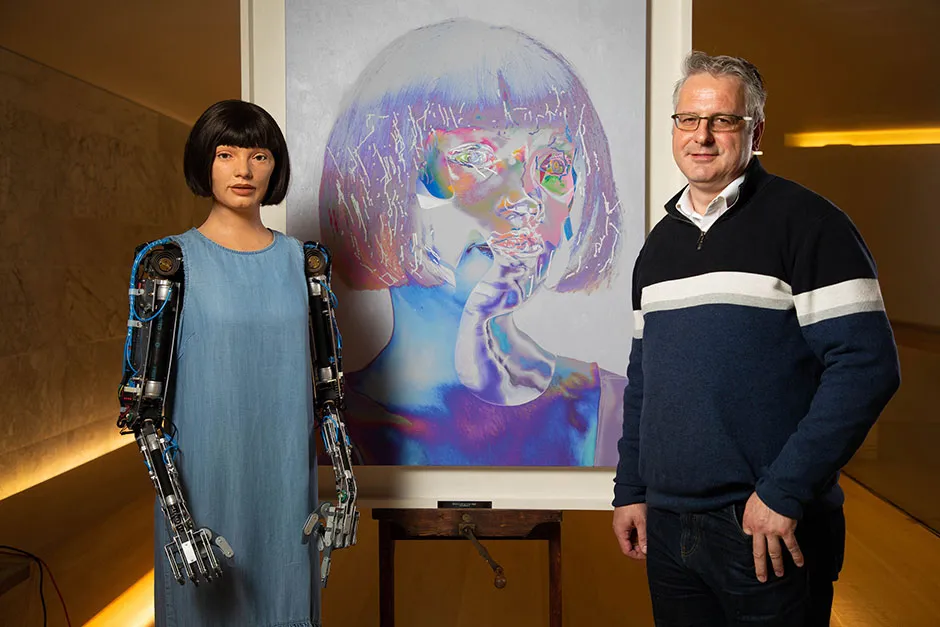Self-portraits by a robot artist have gone on display at the Design Museum.
The life-size “ultra-realistic” android, named Ai-Da and created in 2019, is the first of its kind in the world, according to the London museum.
The robot creates large-scale self-portraits and “uses AI algorithms to produce works that comment on the current and future uses of artificial intelligence”, it added.
Ai-Da was named after scientist and mathematician Ada Lovelace.

Aidan Meller, Ai-Da project manager, said the robot “enables questions of our time to be asked about future technologies, their use, their abuse, the risk that they pose and actually where we are going in the future”.
Speaking to the PA news agency, he added: “The goal is to engender a discussion, to discuss where we might actually be going as a world.
“Some incredible technological changes are happening at the moment and that’s quite disconcerting.”

Lucy Seal, project researcher for Ai-Da, said: “If Ai-Da does just one important thing, it would be to get us considering the blurring in human/machine relations, and encouraging us to think more carefully and more slowly about the choices we make for our future – there are clear advantages that need to be developed and celebrated, however Orwell and Huxley’s cautionary messages still remain relevant and we would do well to take heed.”
Ai-Da: Portrait Of The Robot will be on display at the Design Museum from Tuesday until 29 August.
Reader Q&A: Can robots be creative?
Asked by: Dave Roberts, Sheffield
Yes they can. Creativity involves combining ideas together in novel ways. In nature, we see amazing creativity arising from evolution, where genes from different parents are uniquely blended.
So when we use genetic algorithms, which mimic evolution, computers ‘cross over’ ideas in novel ways to produce highly creative solutions. Today, computers can compose music, produce art, and design unconventional and efficient solutions to problems.
Read more: